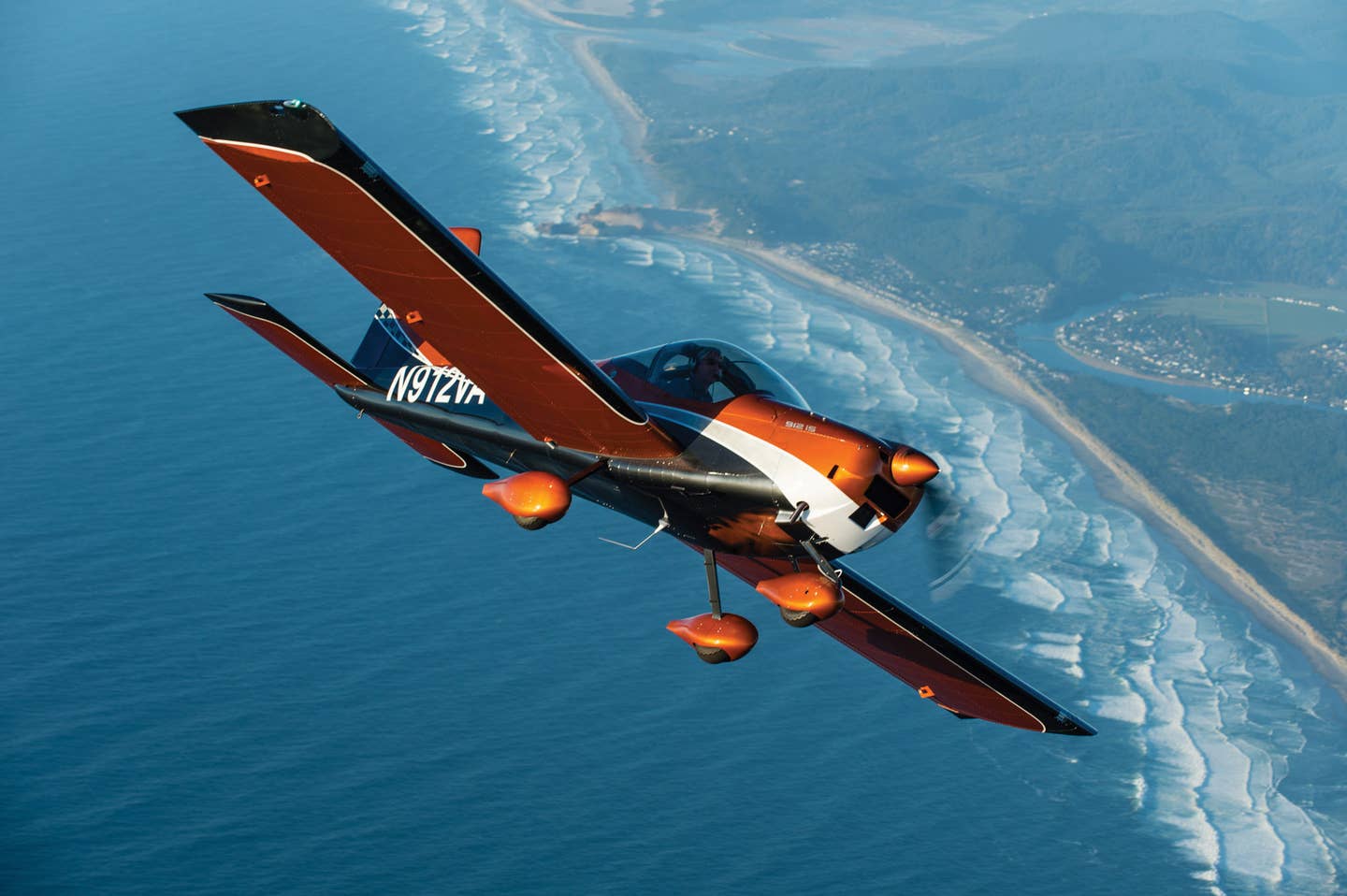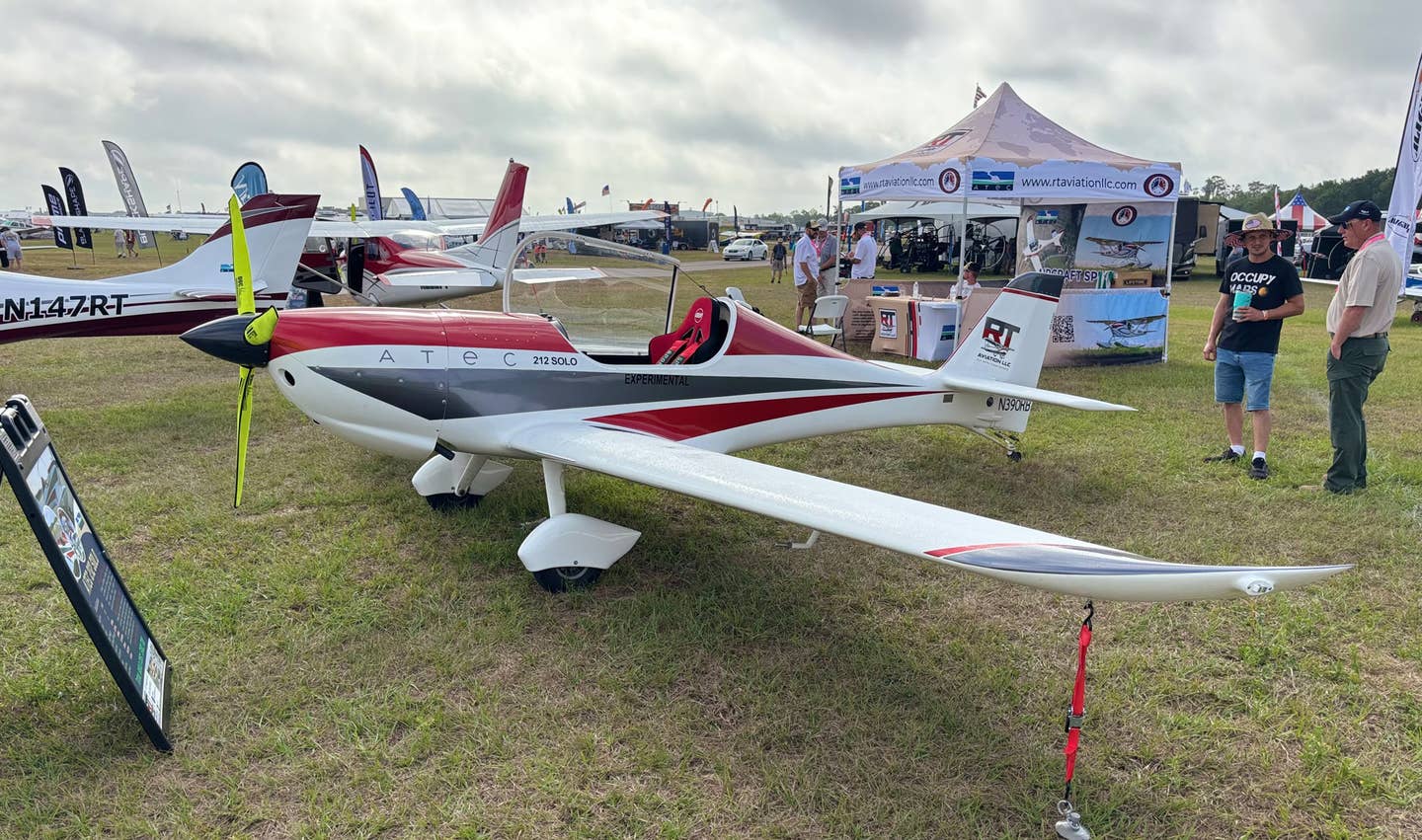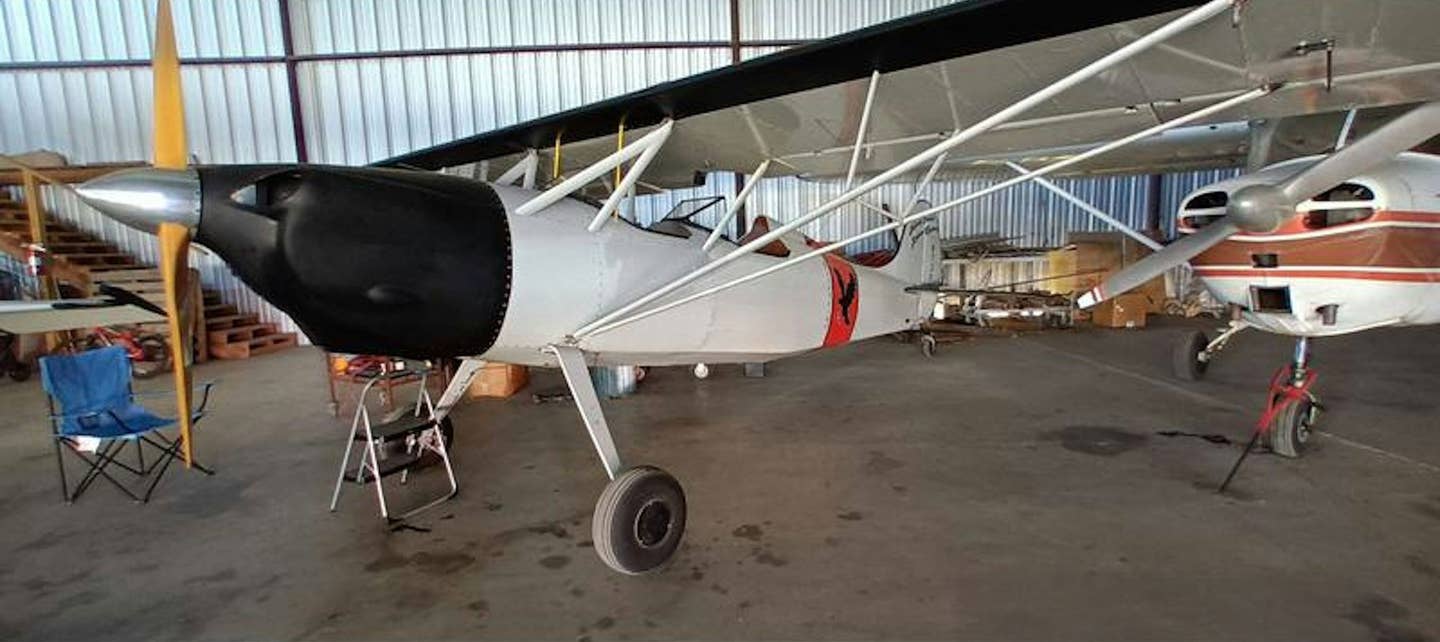
Images by Aric Krause/Ed Hicks
Success can be measured in many ways.
Sometimes it’s influence—does the model change the course of the industry or, maybe, uncover a heretofore unseen market niche? Sometimes it’s emotional—the Beech Starship, what few of them are still in the wild, inevitably wow viewers of both the pilot and nonpilot persuasion. But successful? Not at all.
Once you get past the aesthetic and emotional, success becomes a game of numbers. How did any given airplane sell? Was it profitable for the company? Did it become popular enough to create ripples of supporting industry around it, for both modification and repair? There are so many ways to slice this cake.
Looking at the light sport market, it’s hard not to give the Van’s RV-12 its due. According to registration statistics gathered by affiliated website ByDanJohnson.com, there are 890 RV-12s on the rolls in three key categories. That figure, by the way, places it first in the category when you combine special light sport aircraft (SLSA, factory built), experimental light sport aircraft (ESLA, partial homebuilt) and experimental/amateur-built (E/A-B, the so-called 51 percent homebuilts). Looking at each category separately, there are 158 RV-12s registered as SLSAs (seventh in ranking within the category), 90 as E/A-B (15th in rank) and 640 as ELSA (again first in rank).
Let’s dissect that just a bit.
The SLSA models are currently in production at a rate of about three a month, which is an improvement over recent efforts. Van’s has recently broken through its biggest hurdle to increased volume. What is it, you ask? Airframe, avionics, engines, basic labor issues? Nope. Paint. Now that Van’s has its own paint shop on site at the Aurora, Oregon, factory, it controls the flow of RV-12s into and out of that phase of manufacturing. A captive shop is both more responsive to flow demands, but can be held to a higher standard. It wasn’t easy or cheap for Van’s to build its own paint facility, but it’s already paying dividends on the RV-12 line.
We’ll come back to the SLSA version of the 12, but it’s worth noting the high percentage of ELSA examples in the wild, especially considering that the RV-12 is also offered as a conventional E/A-B version that’s subject to the so-called 51 percent rule—where the builder has to construct the “major portion” of the airplane. An amateur-built example can be configured any way the builder wants, including swapping out engines, avionics, propeller—whatever. In order to be flown by a sport pilot, the resulting airplane must still meet the current regulations—1,320 pounds maximum gross weight, 120 knots max cruise speed, for example—but how it gets there is up to the builder.
The ELSA is a different animal. It is still constructed by individuals, but there is no longer concern about “major portion” aspects. The company making the parts can do pretty much any level of completion the builders are willing to pay for. However, the airplane must be completed in a way that it conforms exactly to the SLSA example, of which there must be one for an ELSA to exist. That means the same engine, propeller, avionics package, and general systems layout. (No adding 30 gallons of fuel.) There can be deviations if they are approved by the manufacturer, but generally an ELSA is meant to be a mirror image of the SLSA upon which it’s based.
Individuals can attend training classes to obtain an LSA repairman certificate that, with the right endorsements, allows them to perform maintenance, including annual inspections, on their LSAs. This is an important distinction with the E/A-B examples, which can only be maintained by the original builder who has received a repairman certificate for that particular airplane or by a conventional A&P mechanic.
It’s easy to see how the ELSA version leads in registrations.
By nature, the RV-12 is an easy kit to build. Rather than conventional driven rivets, like your average Cessna or Piper use, the RV-12 uses pulled rivets, which are fundamentally more forgiving during the construction phase and mean the design can be built with “blind” components, so you don’t have to have access to both sides of the material to drive a rivet. And the available subkits remove the necessity for builders to construct wiring harnesses or any of that sort. Specific variations are available for any given avionics package approved under the SLSA configuration.
And while it’s not possible to use an ELSA for rental or hire, its proximity to the production-line SLSA preserves resale value and helps make it easier to maintain because more shops would be familiar with it.
A Modern Trainer
If anything, the RV-12 is finding its niche as a modern trainer.
First of all, it’s way more fun to fly than your legacy trainers, but more on that in a minute. Another compelling argument is cost. Currently, the SLSA version of the RV-12 in Standard Trainer trim costs $189,500, which includes a single-screen EFIS (Dynon HDX or Garmin G3X), Garmin GTR 200 comm radio and remote transponder. Most schools, however, have opted for the Advanced Trainer at $219,500, which adds a second large EFIS screen, two-axis autopilot, autopilot control head, Garmin GTN 650 GPS/nav/comm, and Garmin GMA 245 audio panel.
All trainer models come with a single-color paint scheme, but the Standard can be upgraded to two screens and an autopilot. There are other options, including a three-blade Sensenich prop ($1,100). Note that because of current LSA rules, the RV-12 can be flown on an instrument flight plan but cannot be flown in actual instrument conditions.
Van’s offers three iterations of non-Trainer models as well. (Mechanically all RV-12s are the same.)
The Standard starts at $198,500 and is similarly equipped to the Standard Trainer but adds a multicolor paint scheme, AeroLEDs exterior lighting, and wheel fairings. The Premium model ($212,500) adds the second EFIS screen and a two-axis autopilot, while the Platinum ($232,500) replaces the GTR 200 comm radio with the GTN 650 GPS/comm/nav unit.
A note on prices: Van’s is in the process of tweaking the content levels of all models by making standard some currently optional features and adding a few new ones. But it’s also predicting a price increase across the board going into 2025. How much has yet to be determined.
Even considering that, Van’s can make a compelling argument to flight schools in ways more than just acquisition cost.
Training facilities have gradually adopted LSA trainers since the category became reality more than two decades ago, but the core fleet is still made up largely of legacy airplanes. In part this comes from the early models being, shall we say, less than robust. And when they got bent, it could take some time to get replacement parts from a non-U.S. manufacturer and, on top of that, many shops had little training or comfort with repairing composite structures.
The RV-12 is, of course, all metal. It’s a very basic, conventional design on top of that. Sure, there are the removable wings and an unusual-for-an-RV stabilator out back for pitch control, but there’s nothing revolutionary in the concepts or execution.
Because Van’s wanted the RV-12 to be easily trailerable, the wings separate from the fuselage with a minimum of fuss. In fact, the unusual pitot-tube location—it peeks out from the center of the prop spinner—was chosen to reduce fuselage-to-wing connections. It’s also why the 20 gallons of fuel is carried in a robust tank behind the two seats.
From there, it all starts to make sense. With fuel behind the passengers, they can move forward in the fuselage, which then puts the wing’s carry-through structure under their knees without having a wing with a far-aft main spar. The lightweight Rotax 912—originally the carbureted, 100 hp ULS but now exclusively the electronically fuel injected iS—and the composite Sensenich ground-adjustable propeller make it all possible.
Point being, the RV-12 is eminently repairable for minor damage. Replacement skins are available and intrinsically self-jigging, and the pulled-rivet construction makes repairs dramatically simpler than on a conventionally riveted aluminum structure.
Van’s offers a comparison of a dinged leading edge repair. For the RV-12, the estimate is about $1,200, including eight hours of labor. For a Cessna 172, Van’s says $5,200, including 32 hours of labor.
In addition, the warranty for the Rotax—the non-certified version of the 912 iS that the RV-12 uses—starts at 18 months or 200 hours but can be extended by purchasing Rotax Care for $2,900 that extends the coverage to five years or TBO (2,000 hours). For flight schools, they’ll likely exceed the hours before the years, but since the offer currently includes a Bose A30 headset (valued at $1,300), the real cost is $1,600 for significantly more coverage. Van’s says virtually everyone is opting for Rotax Care.
In general, flight schools rate the RV-12 well. Van’s has issued a number of service bulletins involving several systems, including radiator mounting, exhaust pipes, the potential for cracking in early nose-gear struts and one calling for replacement of certain Rotax electric fuel pumps. There are a few related to wear expected in the training field, but these generally have simple fixes.
Yeah, So How’s It Fly?
We’ve danced around what seems to have made the RV-12 successful. Sure, the economics put the airplane in the high-value category in the wild world of 2024 aviation, but this approach ignores what it’s like to fly the RV-12.
First of all, you start where you don’t expect, standing in front of the low wing, which hits you mid-thigh. It’s not difficult to use the standard step to ease into the left seat. You don’t have to stand on the seat cushion, either, because you naturally land with your feet on the floor. The large canopy pivots at the firewall, so it’s up and out of the way as you settle in.
Students who began their training in yoke-equipped airplanes might be surprised to see twin control sticks in the RV-12. But it’s not difficult to learn. In fact, those of us who fly both types typically prefer the stick. It quickly becomes intuitive.
Once you’re in, you’ll notice the superb visibility.
The canopy provides plenty of headroom for even taller pilots, while the view over the nose is equally generous. A cowling that snuggles against the compact Rotax helps, but so too does the relatively high seating position. Moreover, because the wing is slightly aft, you can even lean forward and peek ahead of the leading edge to see downward much more effectively than in, say, a Piper Cherokee. Cabin sidewalls hit you about mid-bicep, too, so the sense is of a nicely sized, very airy cabin.
Rotax’s latest 912 iS acts just like a modern automobile on first start. Work through the checklist, and soon you’re pushing the start button and the 4-cylinder comes alive to a slightly busy high idle. You need to hold it there to get all the systems online, but even the normal idle speed is much higher than with a common Continental or Lycoming. Considering aviation has had the Rotax 912 around since the early 1990s, this isn’t much of a surprise. A nuance, perhaps.
Like most homebuilts and many SLSAs, the RV-12 steers on the ground via differential braking, but the good-sized rudder does contribute if you have a bit of wind. Right until liftoff, takeoffs are fairly uneventful. But once flying, the RV-12 reveals itself as anything but a plodding trainer.
On the walkaround, you doubtlessly noted the full-span flaperons (flaps plus ailerons as one unit).
Once flying, they show their colors: The RV-12 is light and very responsive in roll. It’s common to overcontrol for the first few minutes. But after that, you can revel in the lack of control friction and beautifully progressive authority as you roll the airplane around the pattern. That it has a modest wingspan—26 feet, 9 inches—and nothing much heavy out in the wings really contributes to this part of the airplane’s mannerisms.
Next to roll, pitch feels more “normal” in that it has a strong tendency to stay on trimmed airspeed, but the overall forces are still lighter than you’d feel in a legacy trainer. The rudder hardly calls attention to itself outside of having plenty of authority. In all, the RV-12 has the right mix of control forces.
By the time you’ve sorted out your own responses, you’ve probably blasted through pattern altitude, so you might as well go and do some airwork. Here again, the RV-12 shows nothing untoward. Slow flight is really good, supremely predictable. The stall, when it comes, is more than a mush but less than a sharp break.
You will know when the wing is done flying, but the airplane recovers quickly with all the normal techniques. Modest wing loading—10.4 pounds per square foot—makes the RV-12 a little” busy” in turbulence, though some of that is attributed to a lack of inertia in roll. It’s so light that the RV can feel a little active in that axis.
Airplanes in the LSA category have some performance limitations, so the RV-12 gets right to the 120-knot max cruise figure. It does so easily, so you can pull back the power and still maintain a reasonable cruise speed on 3.5 to 4.5 gallons per hour.
Oh, and you don’t have to trouble yourself with a mixture control. Both models take care of that, though the electronic iS does it far better—it’s constantly changing fuel delivery and ignition timing for best efficiency. It’s not hard to have 4.5 hours of endurance (with a one-hour reserve) out of the 20-gallon tank. Efficiency relative to a Cessna 152 isn’t really close, much less to the bigger Cessna 172 that so many flight schools lean on.
Finally time to land, and here, it’s also a little different.
The view over the tapered cowling takes a bit of adjustment if you’re used to seeing a lot more of the airplane, as does the low approach speed. With a 41-knot stall speed, the common 1.3 Vso approach speed is 53 knots. It actually feels slower. So the temptation is to fly too fast and float down the runway, which the RV-12 will do for quite some distance.
Get the speed right or, better, fly it via angle of attack (available on all the EFIS options) and it’s a different story. You have strong control authority at these low speeds, so slipping into a crosswind or keeping the upwind wing down is not a challenge. With a small amount of practice, getting the 12 to settle on its aluminum-beam gear gracefully is completely within reach.
Reasons for Success
Perhaps the reasons the RV-12 has sold well come from many different directions.
For many homebuilders wanting to transition to sport pilot flying, the 12 is the logical choice—familiar as their bigger RVs but accessible.
For pilots coming from the certified side, its all-metal construction is comforting. For flight schools, the low maintenance and repair costs are no doubt a strong incentive, plus they’re able to offer students a more modern training airplane with the latest avionics. All good reasons.
Kid-Proven
The RV-12 is involved in another kind of teaching.
In this case, through a nonprofit called Tango Flight, some 40 schools around the country use the airplane as the centerpiece of a two-year STEM program at the high school level. Students in aviation programs participate in building an RV-12 during the junior and senior years.
While Tango Flight has used other aircraft in the past, it’s strictly an RV-12 program now.
“We have a terrific relationship with Van’s,” said Craig Anthony, Tango Flight’s director of marketing. “It’s crucial that we get parts on time so that these programs can proceed during the students’ availability, and Van’s has been excellent there.”
By design, the RV-12 is a good candidate. It’s simple enough to manage over a two-year period but has all the common structure found in larger aircraft.
“Plus, we find the documentation and plans are first rate,” said Anthony. “It takes no time at all for students to get comfortable with the plans and be able to follow the build processes well.”
More important, perhaps, is that these are transferable skills. If you can read airplane plans, chances are good you’ll find, say, HVAC or other trades easier to learn. One school in Texarkana, Texas, is also offering to give students 15 hours of credit toward an A&P certificate, cutting three months out of the yearlong program.
While the program is largely funded by the schools, the ability to sell the airplane afterward helps support the staff working inside the schools.
Asked if anyone is worried about buying a student-built airplane, Anthony said that’s not the case.
“Remember we have plenty of guardrails up,” he said. “Plus the quality of the work by the students is exceptional.”

Subscribe to Our Newsletter
Get the latest Plane & Pilot Magazine stories delivered directly to your inbox






